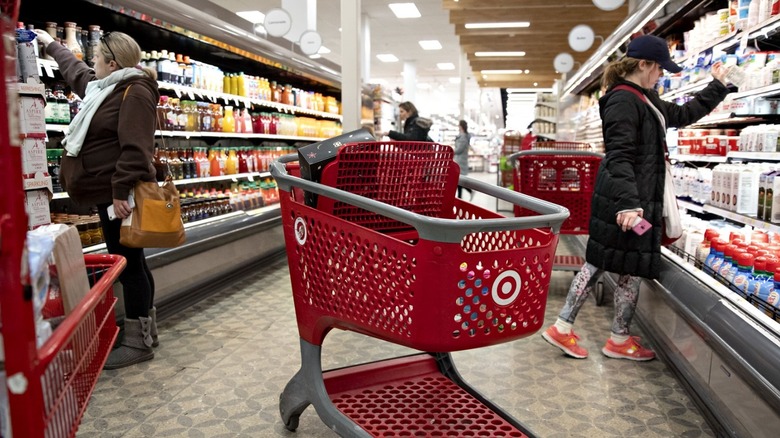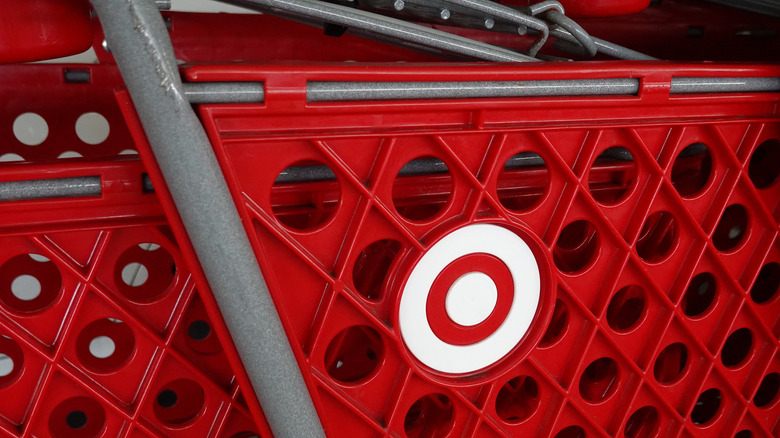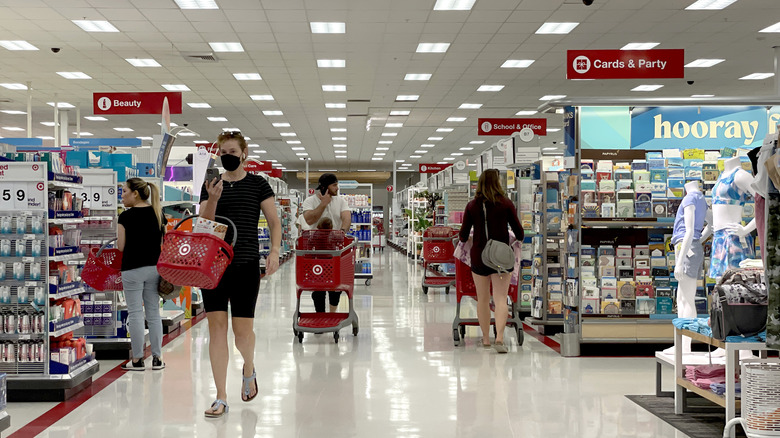Why Target's Short-Term Future Doesn't Look Rosy
Target knew it had a big problem on its hands when, during the last earnings cycle which came around in May, it reported an excess of inventory that shoppers were no longer buying thanks to a change in consumer spending habits — partly from inflation. Hoodies and sweatpants had given way to swimsuits and suitcases, and, per CNBC, the big box giant reported $15.1 billion in inventory at the end of April 2022, or roughly 43% more than they had in stock during the same period last year.
Target wasn't alone. Other retailers like Abercrombie & Fitch were seeing the same inflated levels of inventory, and it was then that Target CEO Brian Cornell told CNBC that the retailer needed time to make room for other types of merchandise, with an emphasis on food and school supplies. "We thought it was prudent for us to be decisive, act quickly, get out in front of this, address and optimize our inventory in the second quarter — take those actions necessary to remove the excess inventory and set ourselves up to continue to be guest relevant with our assortment," he said back in June.
Target's report card shocked investors
That warning proved to be a prophecy when Target revealed its financial report card on Wednesday, showing that quarterly profit nosedived almost 90% thanks in part to what CNBC said were "steep markdowns on unwanted merchandise," which included clothing, electronics, and home goods. CNN adds that Target also wrapped up its second quarter with 15% more inventory than it had three months prior, and 36% more stuff from the same time last year. Target's losses were all the more apparent because it had seen seven straight periods where its profits had been very strong.
Target's losses were also surprising because they came just after Walmart released its own financial report, which showed it was doing better than financial analysts had hoped, per Fortune. Still, as Walmart's CEO Doug McMillon said during Walmart's own earnings call, "The reversion back to pre-pandemic norms has been sharp and difficult to predict. These trends have been exacerbated by inflationary pressure on the consumer that many of us have not experienced in our lifetime."
Target's dark days are behind it
Target's Chief Growth Officer Christina Hennington put the retailer's earnings in context during its earnings call, which took place after results were announced, saying, "Consider the alternative, we could have held on to excess inventory and attempted to deal with it slowly over multiple quarters or even years. While that might have reduced the near-term financial impact it would have held back our business over time" (via Seeking Alpha). CEO Brian Cornell also predicted that even though consumer spending activity remained unpredictable, Target's darker days were behind it: "The high-level story is: The vast majority of the financial impact of these inventory actions is now behind us," per CNN.
But the big box store's earnings report wasn't completely bleak. During the company's earnings call, Cornell said that one area of the business continued to do well: its food and beverage category, which he said "[has] grown more than 50% or $1.8 billion since the second quarter of 2019," according to Seeking Alpha. Hennington also said they had seen an uptick in demand for its store brands, saying: "We've seen our guests shop our own brands in bigger ways and more frequently, knowing they are choosing great quality products with incredible value. We've also seen guest behavior evolve, as they focus on optimizing their personal budgets through a heightened response to promotions as well as greater trip consolidation."


